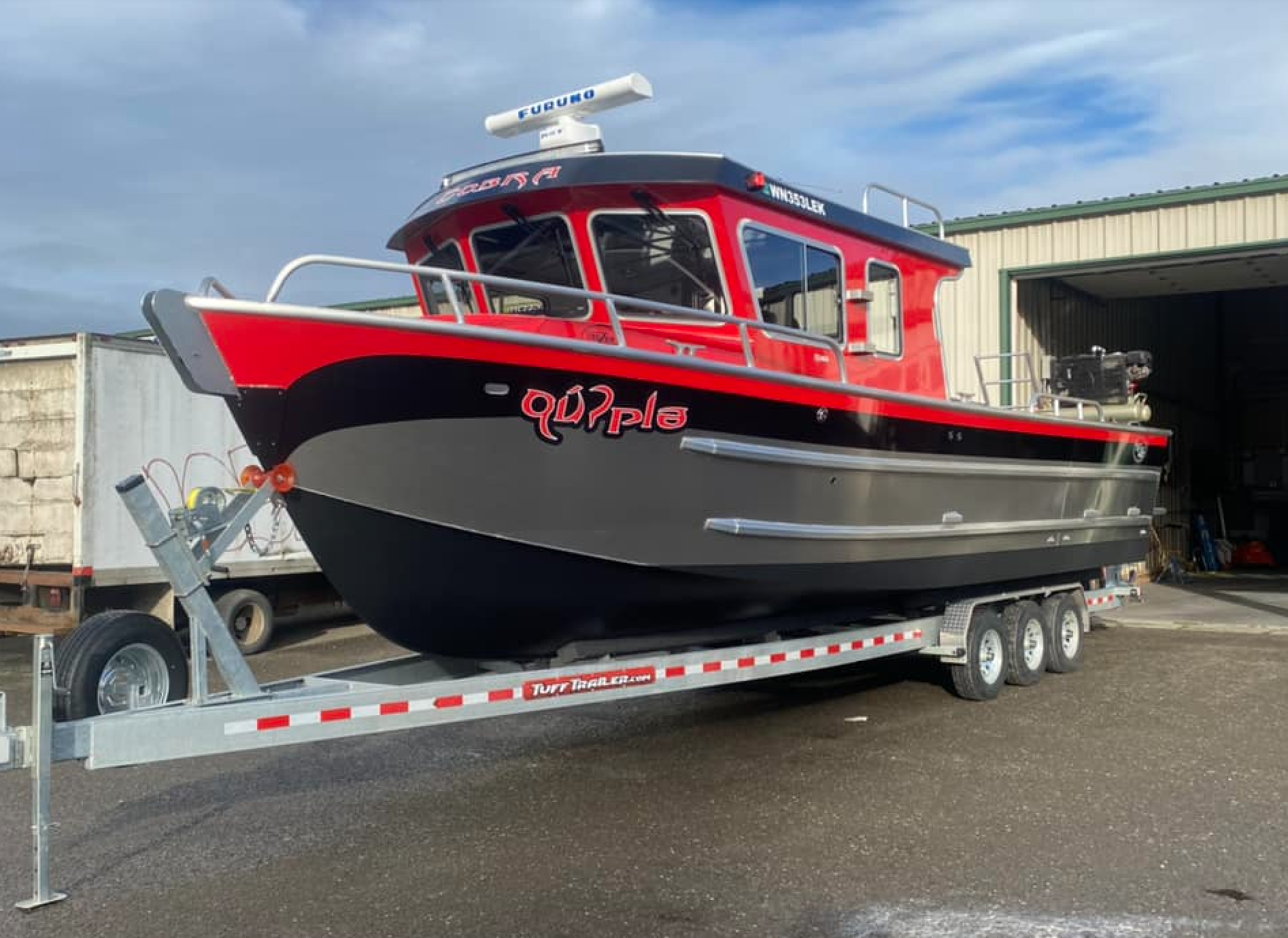What the eye first goes to on this 34 footer — then stops and lingers — is not the white radar antenna on top of the wheelhouse with the word “Furuno” spelled out in blue letters. It’s the red lettering on the bow. What is it? What does it say?
The word can’t even be recreated on the normal computer screen. Well, if you are a member of the Lower Elwha Klallam (also spelled Clallam) tribe in the Lower Elwha River Valley of Washington state’s Olympic Peninsula you’d recognize it immediately as the native language word for Cobra, and you probably know that “Cobra” is the nickname of the owner’s father.
Launched by Crozier Craft in Port Angeles, Wash., at the end of January and designed by Coastwise Marine Design in Nordland, Wash., the 34’ x 11’ Cobra was built for Ed Johnson, a local tribal member who will use the Cobra to dive for geoduck, longline for halibut and pot fish for Dungeness crab, shrimp and prawns.
In February, the Cobra’s crew was diving for geoduck. While the Cobra is anchored by a 14’” x 14” Kinematics anchor winch, an on-deck air compressor sends air down to the diver, working 30 to 60-feet below the surface, through an airline matched up with a communications line, said Chad Crozier, owner of Crozier Craft.
A Pacer pump delivers pressurized water to the diver that helps him loosen the sandy bottom and pull the geoducks free. Landed geoducks are stored in crates in an insulated ice hold measuring 16” (depth) x 44” (wide) x 60” (long). Hydraulics are powered with a 13-hp Honda Power Pack that’s in a compartment in the back corner of the deck.
Crozier describes the Cobra’s electronics package as “extensive. Basically they bought the package you see on a mid-size crabber.” It includes a Wassp system for mapping the bottom, Furuno 12-inch display and Furuno radar with the 4-foot open array antenna.
A pair of 250-hp Honda outboards gives the Cobra a top speed of 36 knots. “It cruises in the upper 20s,” says Crozier.
Currently Crozier Craft is building a 23’ x 9’ setnet skiff for Bristol Bay that will probably be powered with a 150-hp or 115-hp Yamaha.







